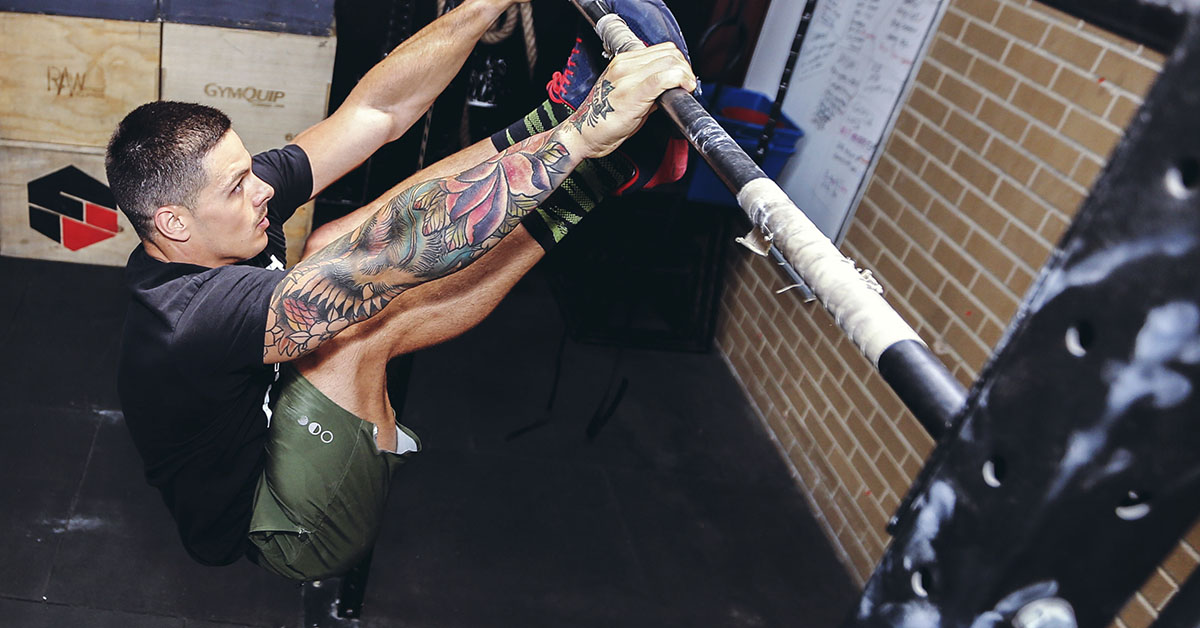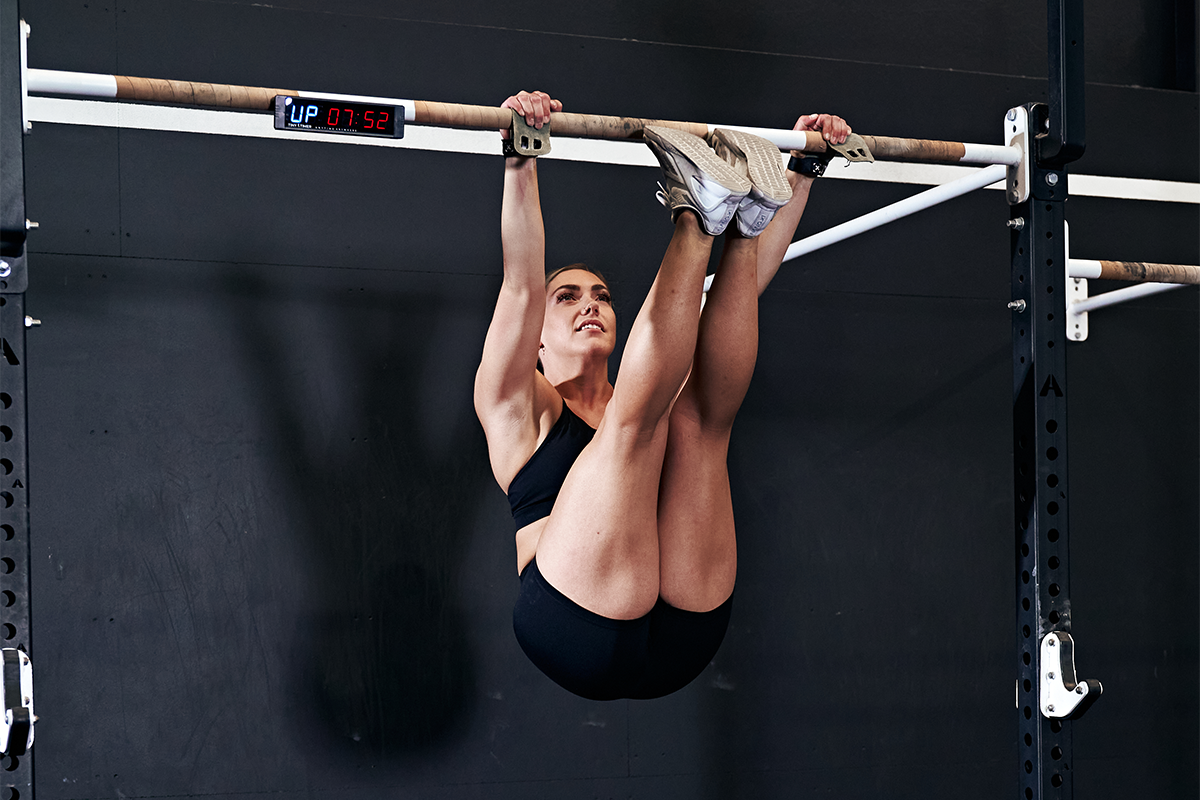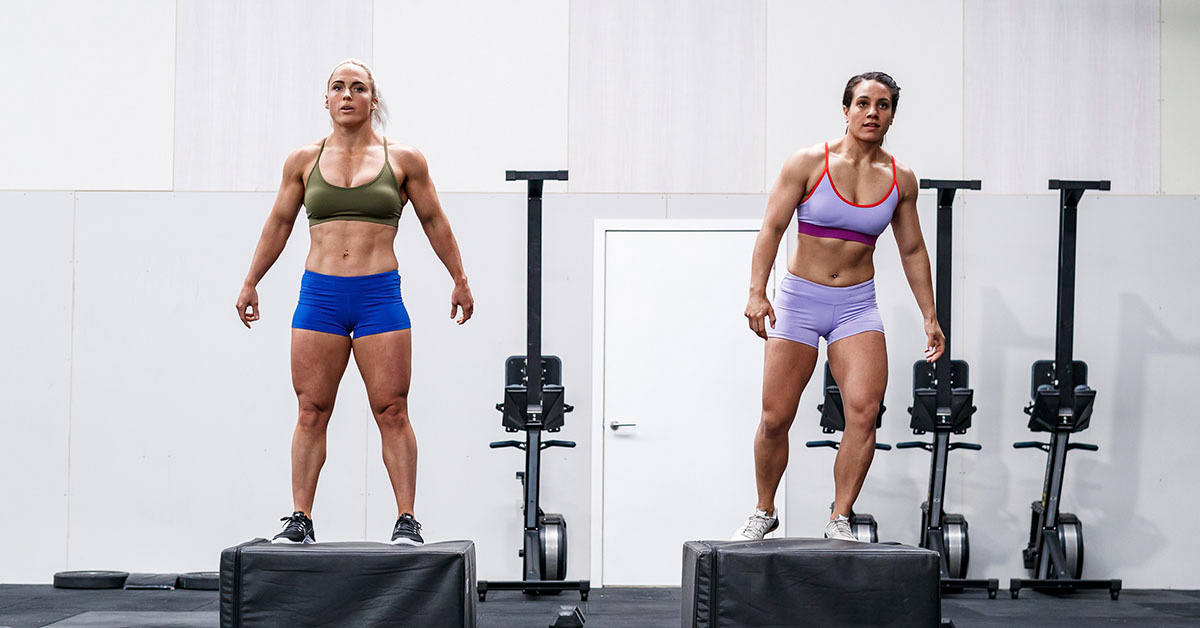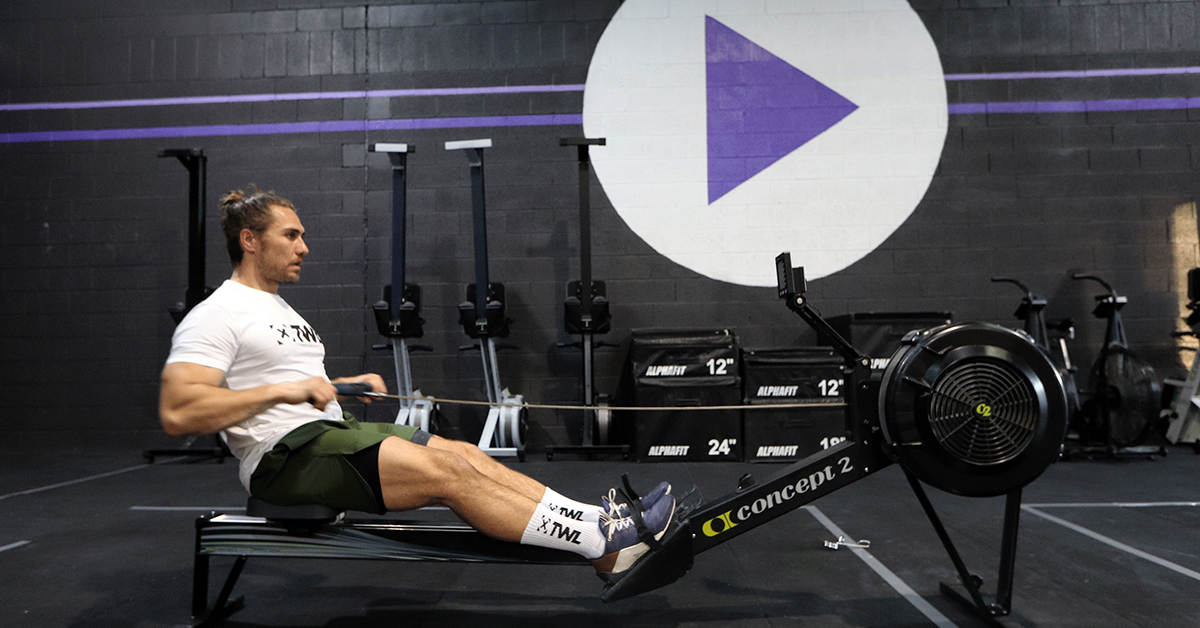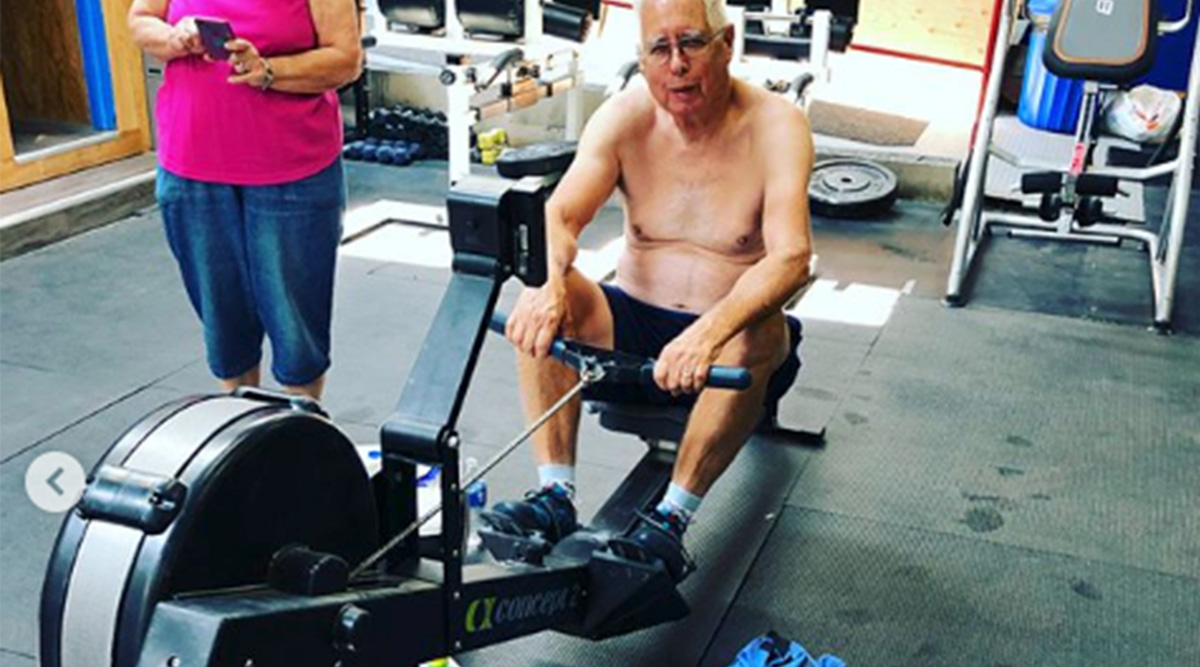18.1, you do not disappoint! The live announcement in São Paulo, Brazil, brought Samantha Briggs and Kristin Holte together for a 20-minute AMRAP consisting of 8 toes-to-bars, 10 dumbbell hang clean and jerks, and a 12-cal (or 14-cal) row. Both women have serious engines, guaranteeing this was going to be a nail-biter. Holte started out in the lead, while a few no-reps for the clean and jerks slowed Briggs down right off the bat. Once she found her rhythm, though, she was able to maintain her pace for much of the workout (just under 90 seconds/round) and quickly caught up to Holte. Around seven minutes in, the gap between the two women was steadily widening. In the end, Briggs finished with 409 reps, and Holte 379.
The pros had a few helpful hints that could help you squeeze in some extra reps, and we’d like to toss in a handful of our own. Here are some simple tips for a better 18.1 score.
Toes-to-Bars
Hello, grip tape? It’s us — TWL. Toes-to-bars are back, and we can’t say we missed them. As CrossFit HQ Director of Training & Certification Nicole Carroll said in the pre-show, don’t be afraid to break these up! Even if you do singles, brief rest and quick transitioning back onto the bar can equate to more reps overall. This will lead to a better score than doing the first set or two unbroken and totally destroying your grip. Jess Coughlan echoed a similar thought, saying you should break them up before your grip fails, not after.
You probably also picked up a nice little trick from Briggs: a small kip. Instead of a bigger superman position, she stayed tight and concise. While utilizing strength and control over momentum isn’t the easiest, it definitely shaved some seconds off her reps.
Dumbbell Hang Clean and Jerks
As we learned from Briggs, this movement might not be the most intuitive. That’s right — even the Engine of England gets no-repped. Make a point of finding your rhythm early on. If you’re not familiar with this movement, here’s a big hint: don’t put the dumbbell down! Rest mid-movement if you need to; but dropping and picking up the dumbbell sucks up valuable seconds, and it’s actually a lot more work for you.
Rowing
Cue the groans. But wait! Listen to Carroll and make it your goal to get back on the rower. Why? Simple. As long as you keep rowing, you’re making progress. In other words, in your mind, look at the row as your opportunity to catch your breath. Slow is okay. Keep your grip relaxed, and use your legs as the driving force — they’re a lot stronger than your arms. Remember the tips we gave you to row efficiently.
You might’ve heard Holte say she purposely didn’t strap her feet in because she’s not the strongest rower, and wanted to save as much time as possible. This is something to check on your own rower before you attack 18.1! They need to be tight enough to keep your feet from moving; but if you can manage with a loose enough setting to easily hop on and off the rower without messing with the straps, it’s definitely an option.
Notes on Pacing
As you probably noticed, this is a marathon, not a sprint. The steady athlete comes out ahead. Instead of going 100% right out the gate, do like Briggs and maintain your pace throughout. Your goal? Just keep moving. This should not be max effort – except for maybe the last few seconds, like how we saw Briggs and Holte rowing their hearts out at the end.
Gear to Bring
Grip. Grip. Grip. 18.1 is so about maintaining a solid and healthy grip. Who wants to rip in the first week of the Open? (Not us.) Chalk is a good start; if you’re worried about not having easy access to any, bring your own! Whatever your preferred method of hand care is, take full advantage of it. Whether you use tape, leather gymnastics grips, or gloves, make sure you plan ahead. Just don’t forget 2018’s standards for hand protection.
(Psst! We made it easy. Here’s everything you might need for 18.1. We have express shipping!)

